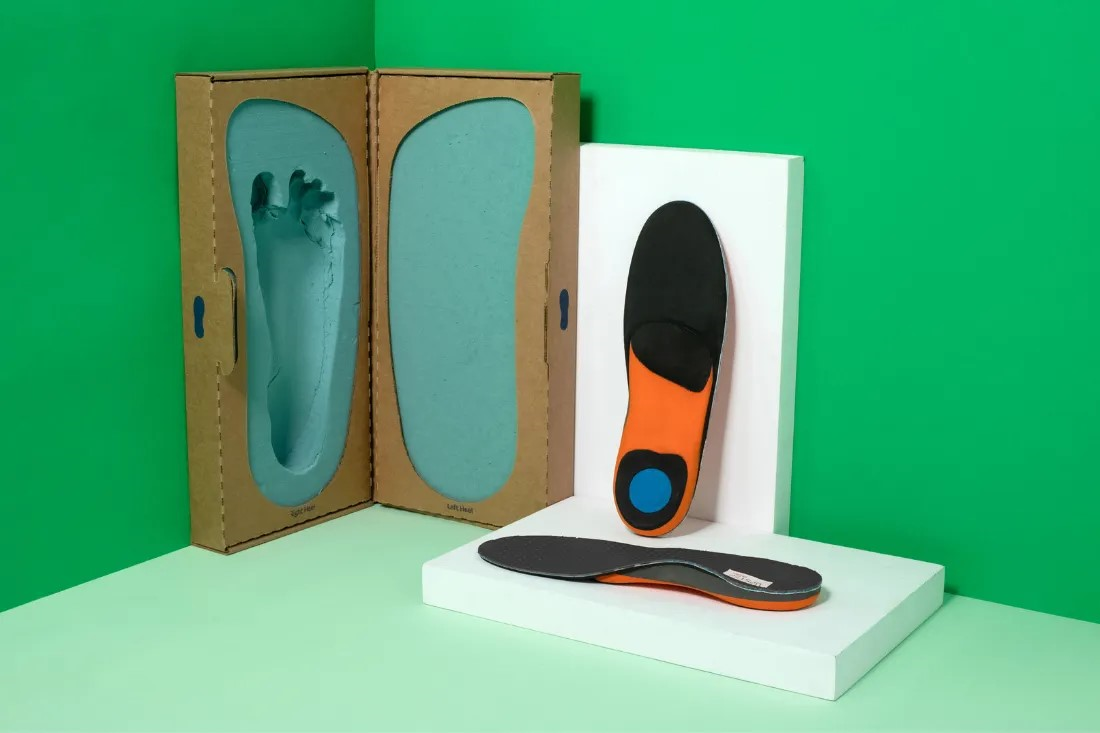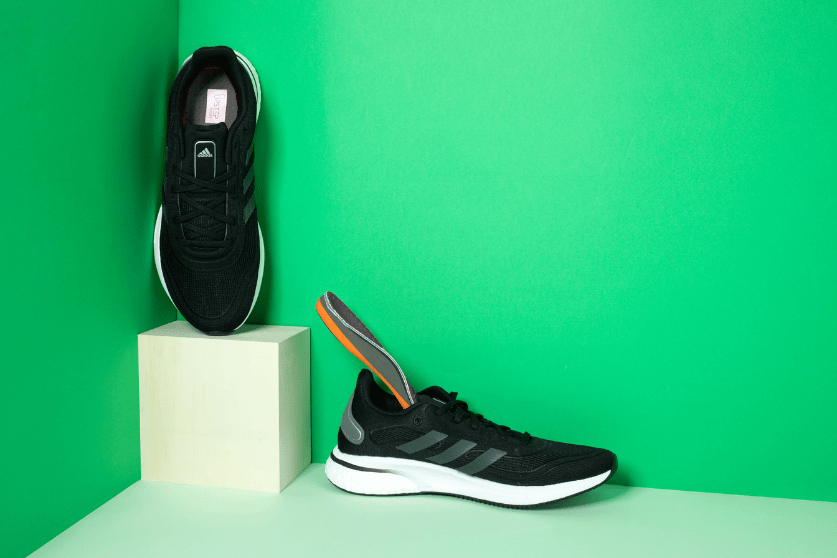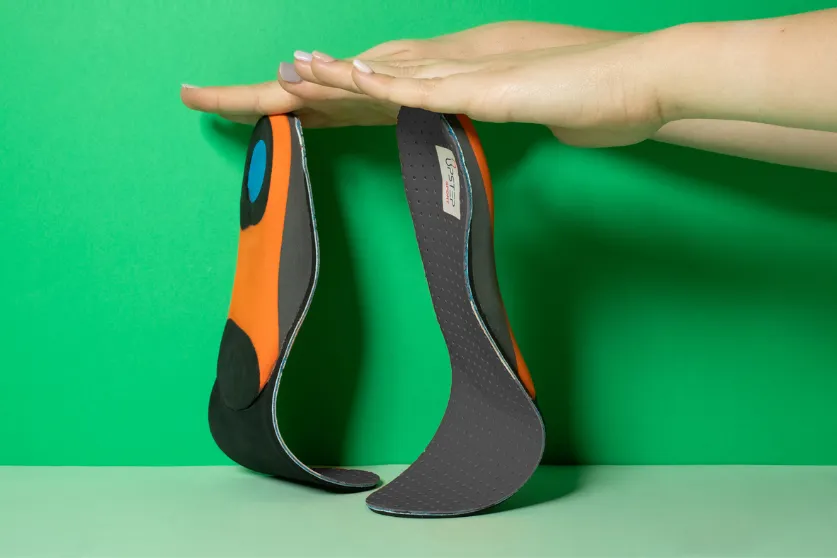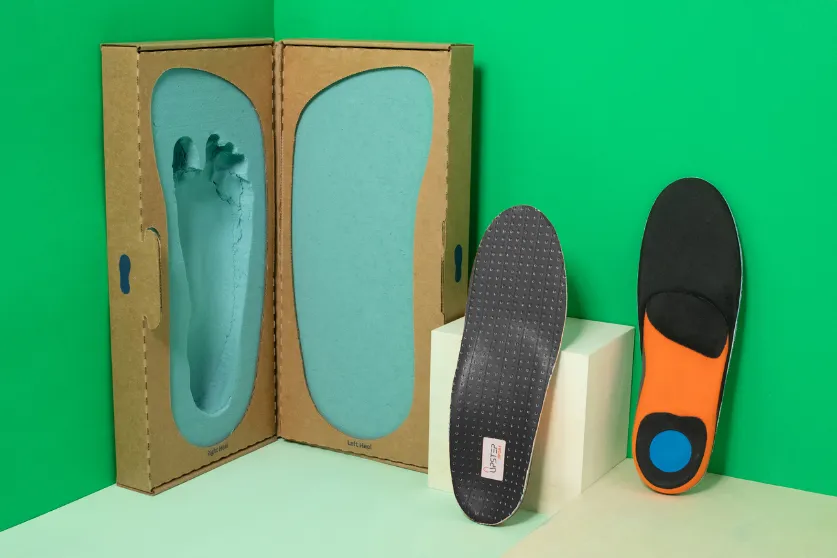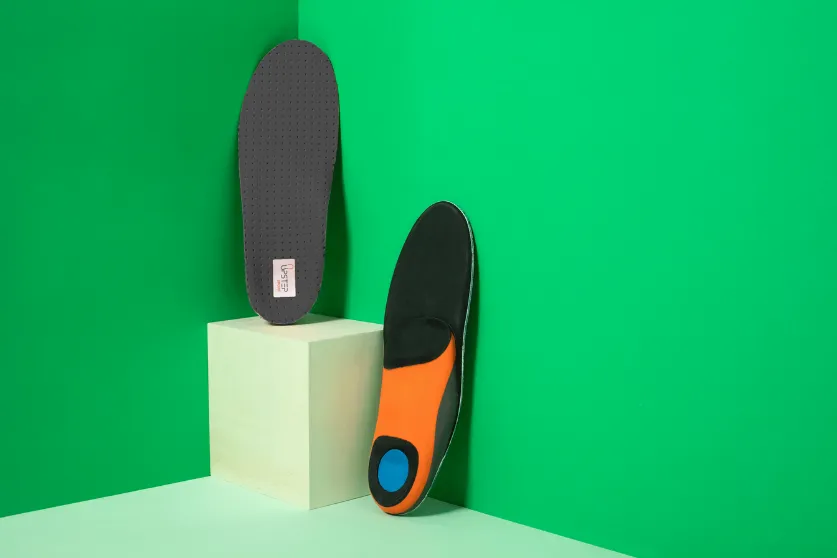Best Running Insoles for Flat Feet to Increase Comfort
Flat feet pounding the pavement? Step up your run with custom insoles for comfort, stability, and pain relief.
Updated October 8, 2024

Whether to use foot supports for running or not is a common question that comes into the mind of most runners.
Not everyone necessarily needs an insole for running, such as perfectly healthy individuals who have never experienced foot pain or excessive fatigue. However, orthotic insoles don't have to be reserved for those with debilitating conditions and chronic pain.
» Start walking comfortably with flat feet. Try custom orthotic insoles
How to Tell if You Need Running Insoles for Flat Feet
To know if you need additional insoles for flat feet or not while running, there are two questions you need to ask yourself:
- Do your feet hurt in the arch area while or after running? This could indicate fatigue or a collapsed arch, leading to the pain you experience and reduced running efficiency over longer distances.
- Have you noticed that your shoes are worn down on the inner side of the sole? You may have pronation or an inward foot roll while running, resulting in a worn-down sole.
If your answer to either of these questions is a yes, you need a pair of insoles. The insoles will support your foot arch while running, lessening the strain placed on the inner aspect of your foot and preventing an inward roll of your foot or ankle.
But, if the answer to both of these questions is a no, then you might not necessarily need to use insoles while running. Though they might still benefit you, they aren't a necessity.
» Discover why you feel pain in the balls of your feet after running
Best Comfortable Insoles for Flat Feet
What Is the Best Type of Running Insole for Flat Feet?
Depending on the type of exercise you're engaging in and even the running style, the insoles should be specific to adhere to and meet the demands of those activities.
It's also important to understand that using flat feet insoles for a particular activity like running can't be done with a one-size-fits-all approach. Whether you need harder or softer materials depends on your specific situation and the type of exercise you're doing.
For instance, running inserts for plantar fasciitis would differ from the best running insoles for pronation or supination, regardless of the running intensity—marathons compared to sprints.
Upstep to Comfort: Optimize Training With Custom Running Insoles
With all the benefits of arch support listed above, buying a pair of custom-made insoles that meet your needs and foot shape is highly recommended. Orthotics are supposed to make your daily living and sports more comfortable and pain-free, in addition to reducing the chance of future injuries.
If you want the best support possible, try Upstep Custom Orthotics. The company collaborates with podiatrists and uses evidence-based practices to design their orthotics, ensuring they effectively address common foot issues like pain, discomfort, and misalignment.
FAQ
Can you use your existing insoles in your running shoes?
If your existing insoles fit comfortably into your shoes and don't slide around, you can use them. If you use arch support insoles for flat feet, you'll probably need them for running.
But, an insole specially made for running would be better as the biomechanics of your body change while running, and the insole needs to meet those demands.
Should you change the insoles on your running shoes?
Different pairs of running shoes have different insoles. Some can be removed, and some cannot. If your exercise shoes have removable insoles, then you should remove them and replace them with your new pair of custom or prefabricated ones instead. But, if your exercise shoes don't have removable insoles, it's important to specify this when buying your new insoles to ensure they can still fit comfortably within your shoe.
Do flat feet runners need arch support?
It depends. While arch support can benefit some flat-footed runners, it's not a one-size-fits-all solution. Consider the severity of your conditions, running style, and personal preference before buying running insoles for flat feet.
Why is it harder to run with flat feet?
Flat feet can make running more challenging because the arch acts like a shock absorber, but flat feet lack this, putting more stress on your joints.
Your weight distribution is also altered, increasing pressure on specific areas and potentially causing pain and discomfort.




